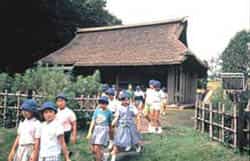Explore Japan

Three-quarters of Japan is mountainous, while the rest is in the form of plains and basins. Japan consists of a series of islands spanning 3000 kilometers from north to south. The four main islands are Hokkaido, Honshu, Shikoku, and Kyushu. Japan is surrounded by sea. Warm and cold currents flow through the surrounding seas, thus forming an environment that supports the development of various species of fish. Most of Japan is in a temperate and temperate North Zone, with a southeastern wind blowing from the Pacific Ocean during summer and northwest winds blowing from the Eurasian continent (Europe-Asia) in winter. ---> Linknya Disini gan! <--- Japan has four distinct seasons. Two of the most beautiful scenes in Japan are when the cherry blossoms bloom in spring and the leaves turn into dazzling red, orange, and yellow colors in the fall. The Japanese enjoy the signs of seasonal change and observe its progress by paying attention to weather reports, featuring maps where th...


